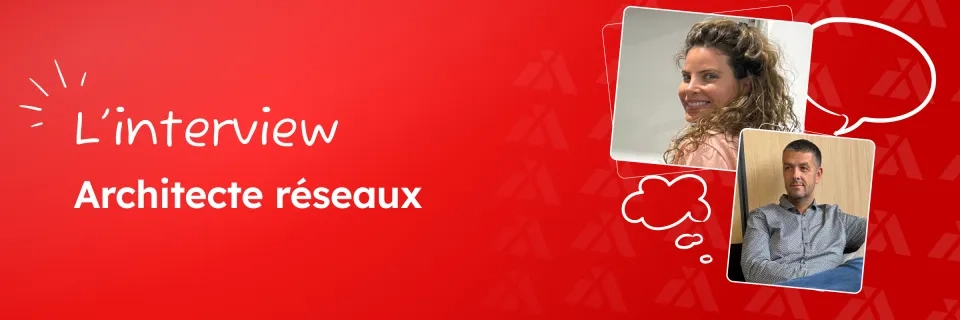Hi Cédric, can you describe your current role and the main responsibilities associated with your job as a network architect?
Hi Alisée. My role is to design, optimise and maintain robust network infrastructures. These must meet current and future business requirements. In other words, my job is to analyse what already exists and understand the customer's needs, both immediate and long-term.
If I were to explain my job to you in (very) simple terms, it would go something like this: I make sure that companies can access their data and applications securely. I start by looking at what they already have and what they'll need in the future. The aim is to have a highly available, high-performance network infrastructure. In other words, I make sure that if one part of the network fails, another part takes over so that nothing comes to a standstill.
I then integrate secure, high-performance, scalable solutions so that the system can grow. And I work with multi-disciplinary teams, such as security engineers, to ensure that our solutions meet the most stringent security standards.
So I have a much clearer idea of what's at stake! You mentioned the importance of redundancy and security in your projects. Can you share a concrete example of a project where these aspects were essential?
One outstanding project was the complete overhaul of a legacy network (an old network infrastructure using somewhat outdated technologies) for a major client.
The aim of this project was to transform an ageing infrastructure into a more secure, redundant and automated model. The transformation has modernised the network and improved its resilience to faults. The automation also simplified operations.
The project required close collaboration with the technical teams and rigorous stakeholder management. Understanding the customer's objectives was essential to ensure that the new infrastructure met their current and future needs.
This type of project demonstrates the importance of working closely with different teams.
How does Inforca support you in working with stakeholders and on client assignments?
Inforca provides me with a structured framework and the resources I need to carry out my assignments. I also benefit from strong collaboration with my colleagues, whether they are engineers or developers, which is a real asset for complex projects.
Inforca also offers me flexibility and listens to my technical choices, which allows me to innovate while remaining focused on the customer's needs.
You mentioned the importance of automation and security. What specific measures are you taking to ensure network security in the face of today's threats?
Security is paramount in every project. We use multi-layered security solutions to protect infrastructures.
These include next-generation firewalls, intrusion detection and prevention systems (IDS/IPS) and real-time monitoring solutions. These systems analyse threats at different levels of the network.
We also use encryption solutions to secure sensitive communications. Collaboration with cybersecurity engineers is essential to ensure constant vigilance and a rapid response to new threats. We identify potential vulnerabilities and put in place protocols to reduce risks and ensure an effective response in the event of an incident.
With this constant vigilance, how do you see network security and management practices evolving over the next few years?
The role of the network engineer is changing rapidly. Today, it is essential to master automation tools. The transition to a NetOps model (which automates and optimises network management by drawing on DevOps methods. It also improves agility, security and efficiency by using automation and real-time monitoring tools) is already well advanced.
We use practices from software development, such as task automation and the use of APIs. We also manage configurations using tools like Ansible or Terraform.
This enables us to be more agile and responsive, while having better visibility over the infrastructure.
With the rise of artificial intelligence, technologies capable of detecting anomalies in real time, anticipating breakdowns and optimising performance without human intervention are in full development.
At Inforca, we're investing in ongoing training, the integration of these new technologies and the adoption of best practices to stay at the cutting edge of innovation. So there's plenty of promise for the future!
Interview by A.F, Digital Development and Events Manager at Inforca, with Cédric, Network Architect at Inforca.




